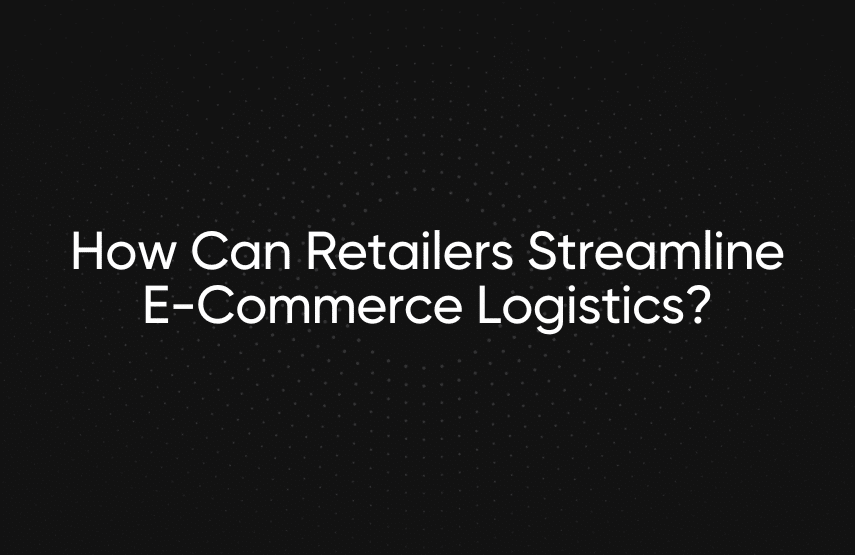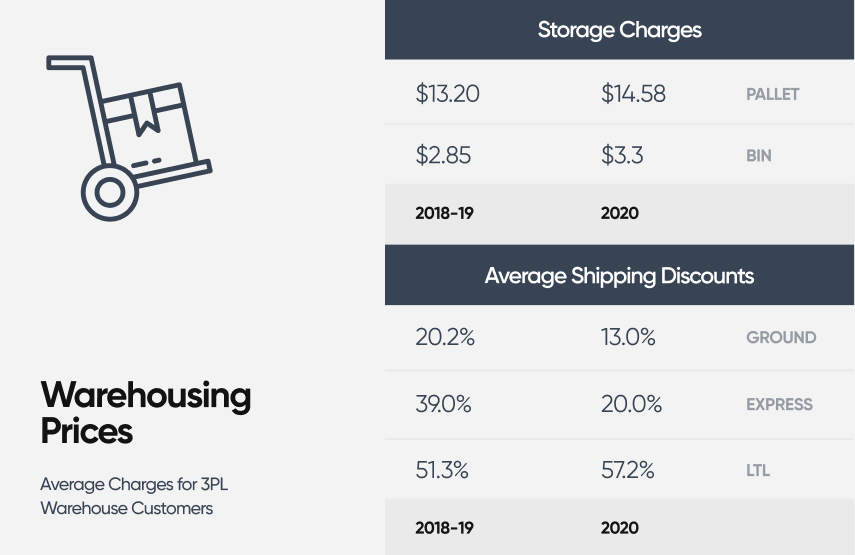How Can Retailers Streamline E-Commerce Logistics?

Retailers must transform the complex and time-consuming tasks of managing inventory and fulfilling online orders into a cost-effective and efficient process to compete in the saturated e-commerce marketplace.
Consumers are increasingly shopping at e-commerce sites. Global e-commerce sales are projected to increase 26.7 percent year-over-year to $4.891 trillion in 2021. Despite the boom in revenue, however, many e-commerce businesses still struggle to turn a profit.
Jason Goldberg’s 4 Reasons Profits Remain Elusive for E-Commerce Retailers explains that the escalating cost of shipping is one of the major reasons why even large e-commerce players like Bonobos struggle to get in the black.
“Demand for e-commerce parcel delivery already outpaces the capacity growth of UPS, FedEx, and USPS, such that delivery fees for any business dependent on third-party delivery keep going up.” –Jason Goldberg
While retail giants like Amazon and Walmart are increasingly investing in their own fleets of cargo planes, trucks, and delivery vans, the vast majority of e-commerce sites must find alternative strategies to cut down on the cost of shipping while still providing customers with the speedy and seamless deliveries they expect.
In this post, I’ll provide some tips that retailers can use to streamline order fulfillment and logistics to maintain customer relations.
[toc-embed headline=”Select Warehouses in Key Locations”]
Select Warehouses in Key Locations
When it comes to logistics, it is crucial to understand where your customers are. An order management system (OMS) provides data on where demand is coming from so you can place your inventory accordingly. Doing so enables the following:
Cost optimization
Last year, 69.72 percent of warehouse owners reported increasing rental costs. These costs are expected to continue rising. Strategically selecting the location of a warehouse is an investment and one of the most important choices an e-commerce business will make.

While mom-and-pop e-commerce businesses can ship from their living room, most larger companies must use warehouses to store and ship merchandise to scale. To cut down on time and money, e-commerce companies must have warehouses located where their customers are.
If most of your customers live in a concentrated area, investing in a warehouse as close as possible to that area is a good idea. For instance, if most of your customers are located in Seattle, but your warehouse is in New York, fulfilling those orders is time-consuming and costly. Thus, having a warehouse in Seattle is more cost-effective.
Alternatively, having multiple warehouses is even more efficient if a business’s customers are fairly spread out. For example, if demand is high on the west and east coast, having warehouses in Seattle and New York enables you to ship inventory from whichever one is closer.
3PL providers
For retailers that don’t want to hold inventory in their own warehouses and don’t have logistical capabilities to ship and fulfill, third-party logistics providers (3pl) can handle shipping. Choosing a 3pl provider located near most of your customers helps streamline logistics.
Dropshipping
Another option is dropshipping. Based on the customer’s location, retailers can buy the product from a local merchant who then directly ships the product. Without ever having to hold any inventory or see the product, retailers can fulfill orders.
[toc-embed headline=”Ensure Accurate and Complete Order Details”]
Ensure Accurate and Complete Order Details
Delivering an order later than promised is a surefire way to lose customers. To successfully fulfill an order, superb operations and clear communication are key. An OMS ensures that you do both.
Order completeness and accuracy are the most important aspects to deliver to customers. Inaccurate addresses can cause a delay in order fulfillment and upset customers. With an OMS, you can validate customers’ addresses when they are creating orders. If you utilize 3pl providers or dropshippers, an OMS ensures they also have the correct address.
An OMS not only ensures the completeness and accuracy of orders, but also enables merchants to track when orders were created, needs to be shipped, and needs to be delivered. In other words, an OMS tracks the end-to-end lifecycle of orders so you can meet the deadlines you promised to customers.
Depending on the kind of OMS, you can update customers on the status of their orders. Some have an event-driven architecture that separates each event of the order process. For example, the OMS notifies customers their order has been delivered via email, SMS, or customer portal.
[toc-embed headline=”Key Takeaways”]
Key Takeaways
- The rising cost of shipping makes choosing a strategic warehouse location critical.
- Retailers can create a supply chain network by shipping from their own warehouses, 3pl providers, or dropshippers.
- An OMS provides sales data to help inform the location of warehouses and tracks the end-to-end lifecycle of the orders.
- fabric OMS streamlines order fulfilments by connecting warehouses and sales channels to sync inventory. Its event-driven architecture also lets you update customers on their orders.

Product @ fabric. Previously @ EMAAR NEXT, Groupon, and NorAm International Partners.